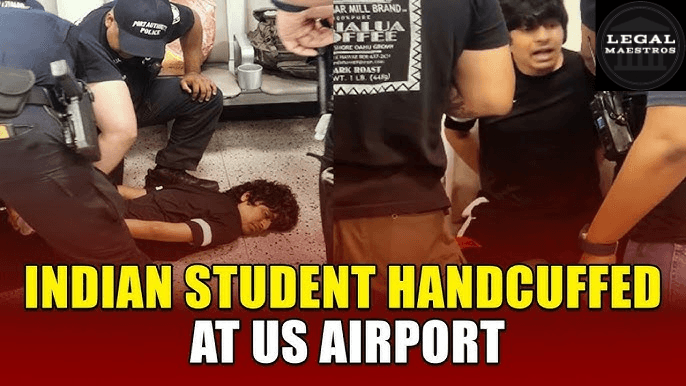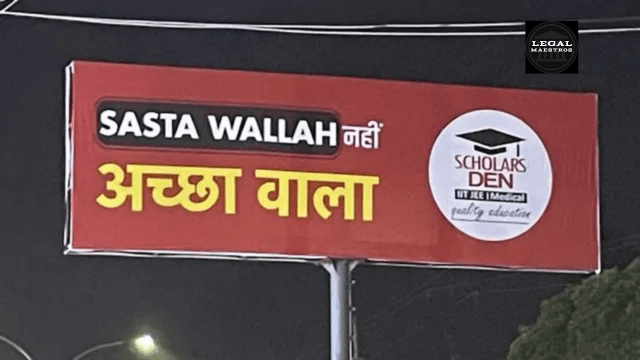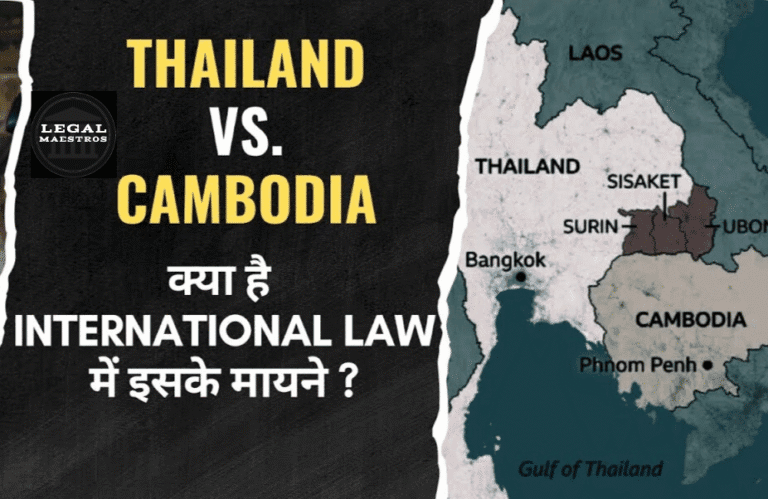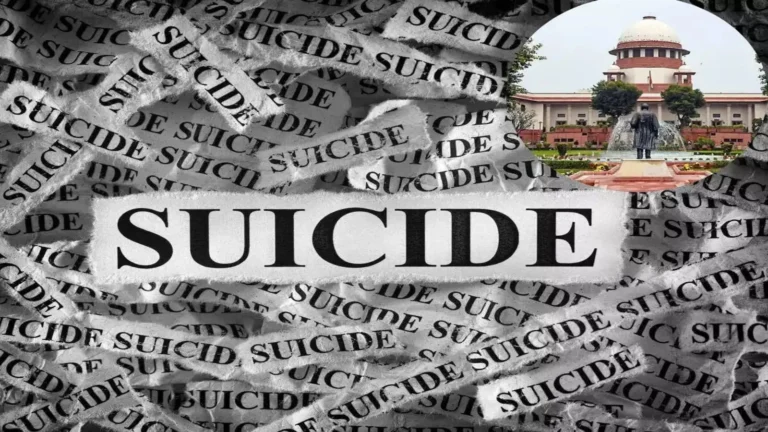
Indian Student’s Deportation Video in US Sparks Debate Over Human Rights Violations
A video that went viral showed an Indian student being held, pinned to the ground, and ultimately deported from Newark Liberty International Airport. The video was viewed by a large number of people.
This film has ignited a heated conversation about the treatment of foreign persons in the United States, as well as the larger implications for human rights. The implications of this video are far-reaching.
It is seen in the video, which has been widely disseminated across a variety of social media platforms, that the scared boy is being held by a number of officials while passengers watch in bewilderment.
For More Updates & Regular Notes Join Our Whats App Group (https://chat.whatsapp.com/DkucckgAEJbCtXwXr2yIt0) and Telegram Group ( https://t.me/legalmaestroeducators ) contact@legalmaestros.com.
As a result of the emotional response to the film, the public’s concern over the methods of immigration enforcement and the delicate balance that must be kept between legal power and individual dignity has been brought to light.
It has been brought to the attention of many who have viewed the video that the student depicted in it is visibly distressed and is crying out in distress as the cops take him away in handcuffs.
A significant number of individuals have come to the conclusion that this circumstance is deteriorating. According to the testimonies that have been presented, the individual, who was speaking in a regional dialect, may have had feelings of worry and confusion during the occurrence.
It has been reported by and that eyewitnesses, including the Indian-American businessman Kunal Jain, caught portions of the incident on their electronic devices and posted it on the internet. As a result, the sense of panic among populations that are a part of the diaspora was heightened, and authorities on both sides of the Atlantic were forced to instantly demand for clarity.
For More Updates & Regular Notes Join Our Whats App Group (https://chat.whatsapp.com/DkucckgAEJbCtXwXr2yIt0) and Telegram Group ( https://t.me/legalmaestroeducators )
It has been reported that immigration officials from the United States deemed the individual’s behavior to be “not conducive for travel.” As a consequence, the individual was placed in a temporary hospitalization for the purpose of receiving medical examination prior to the procedure of deportation being arranged.
However, there is still a lack of information about the particular reasons why the pupil was placed in detention. It has been confirmed by the Indian Consulate in New York that it is actively involved in monitoring the student’s well-being and communicating with authorities in the United States to ensure that his rights are maintained throughout the process.
Concerns have been expressed regarding the openness of procedures and the norms for communication in situations when consular interests and domestic immigration enforcement are in conflict. Despite the fact that some of the reasons for deportation have not been given in their entirety, this is the verdict that has been reached.
As a statement in response to the issue, the Ministry of External Affairs of India brought the matter to the attention of the United States Embassy in New Delhi in a public forum. They demanded a detailed account of the events that transpired, as well as assurances for the student’s treatment and ultimate return to their home country.
Despite the fact that India often takes part in interventions of this kind when its citizens are in danger of being imprisoned in other countries, the widely publicized nature of this particular instance has increased the level of sensitivity it possesses.
The fact that India participates in such activities is brought to light by diplomatic sources. Political parties and civil society organizations in India have voiced their concern that the incident may set a precedent that is worrisome for the way in which Indian nationals who are now residing outside of India are treated. In order to gain a complete explanation, they have demanded that the government provide it.
A reaction was provided by the United States Embassy in India, which highlighted that the United States of America welcomes travelers who are lawfully entitled to enter the country, but that it would not tolerate visa abuse or violations of U.S. law.
Administrative authorities stressed the need of sticking to immigration regulations and making certain that enforcement actions are carried out in accordance with legal frameworks that are intended to strike a balance between the protection of the nation’s borders and the protection of its citizens.
In spite of the fact that the statement that was made by the embassy maintained the rule of law, it did little to mitigate the strong emotions that were occurring. The picture of a young student being detained with such force was seen by many individuals to be disproportionate in comparison to any alleged violation.
According to human rights groups and commentators that have discussed the matter, the tale has been contextualized within broader concerns over immigration policy and the treatment of those who are not citizens.
The dramatic manner in which the student was handled may have been in breach of the rules that prevent arbitrary incarceration and humiliating treatment, according to the opinions of certain individuals. International accords such as the Convention against Torture and the International Covenant on Civil and Political Rights both include these concepts as part of its stipulations.
Despite the fact that the United States of America adheres to domestic statutes that allow for the detention and removal of individuals who violate visa conditions, the optics of physical restraint in an airport setting catalyze calls for a review of the proportionality and humanity of enforcement practices.
Professionals in the legal field admit that immigration authorities have a great lot of discretion when deciding whether or not a passenger is acceptable for the journey; nonetheless, they emphasize that safeguards should be put in place to ensure that inmates are treated with dignity and respect.
They make the point that when compliance is compelled by the use of visible demonstrations of force, it can make the trauma that is already there more worse, particularly for young children who are separated from their traditional surroundings.
Concerns have also been expressed over the availability of legal counsel or medical assessment before to deportation as a consequence of this particular occurrence. As a result of the apparent lack of transparency surrounding the student’s rights and the reasons for his deportation, there have been calls for more transparent procedures and monitoring systems. This is the case regardless of whether or not the removal of the student was carried out in compliance with the terms of the legislation.
As a consequence of the deepening of political tensions inside India, leaders of the opposition have been criticizing the government for what they see to be a delayed or muted reaction to the situation.
In addition to this, they have been asserting that high-level agreements are necessary in order to guarantee the safety of persons who are traveling outside of India. Concerns have been raised by certain individuals regarding the respect and dignity of the nation.
These individuals assert that incidents of this sort have the potential to weaken the trust that Indian students have in their capacity to travel globally. In the meanwhile, voices from the diaspora warn against simplifying the difficult immigration regulations to an excessive degree.
They encourage prospective travelers to be completely informed of the visa requirements and the behavioral expectations that are expected of them when they engage with immigration authorities when they are in the country.
The bigger context includes the shifting legislation that pertain to visas in the United States, as well as the greater scrutiny of arrivals from other countries, particularly under administrations that place a premium on strictly enforcing border restrictions.
Reports suggest that certain students are given visas, travel to the United States, and then face the prospect of being unexpectedly detained and deported if they are unable to demonstrate that they are complying with the claimed purpose of their presence within the nation.
This is the case if they are unable to provide evidence that they are complying with the reason for which they are there in the country. The fact that developments such as these might generate anxiety among student communities has been brought to the attention of commentators, which underscores the necessity of pre-departure orientation and robust consular support networks.
On the other side, incidences that are caught on video have a more powerful resonance, becoming symbols in larger arguments about migration, national sovereignty, and human rights.
It has been requested by several stakeholders that a collaborative discourse be held in order to forestall the occurrence of situations of a similar sort in the future. The proposals include, among other things, providing immigration authorities with further training on how to communicate in a culturally acceptable manner.
Other recommendations include the establishment of more efficient communication channels between consulates and law enforcement agencies, as well as the establishment of procedures that allow for the rapid evaluation of allegations of excessive force in the event that they are brought forth.
The occurrence of this tragedy acts as a stinging reminder to students from India of the potential challenges that may be encountered when studying abroad and the importance of being well-prepared for such challenges.
In other words, it is a warning to politicians that they need to find a balance between the imperatives of enforcement and their commitments to treat people in a compassionate manner. This is done to make certain that the pursuit of security does not take precedence above the respect for the dignity and rights of individuals.
In conclusion, the video of the deportation has evolved into something that is more than simply a single incident; it has become a focal point for discussions on human rights, diplomatic engagement, and the everyday realities of students who are studying abroad.
Despite the fact that legal procedures may on occasion justify removal under certain circumstances, the manner in which the removal is implemented might have far-reaching effects, both emotionally and in terms of reputation.
As investigations proceed and diplomatic exchanges continue, the case underscores the imperative for transparent, proportionate, and compassionate approaches in managing migration, reaffirming that the treatment of individuals in vulnerable positions reflects broader commitments to human rights and mutual respect in an interconnected world.




